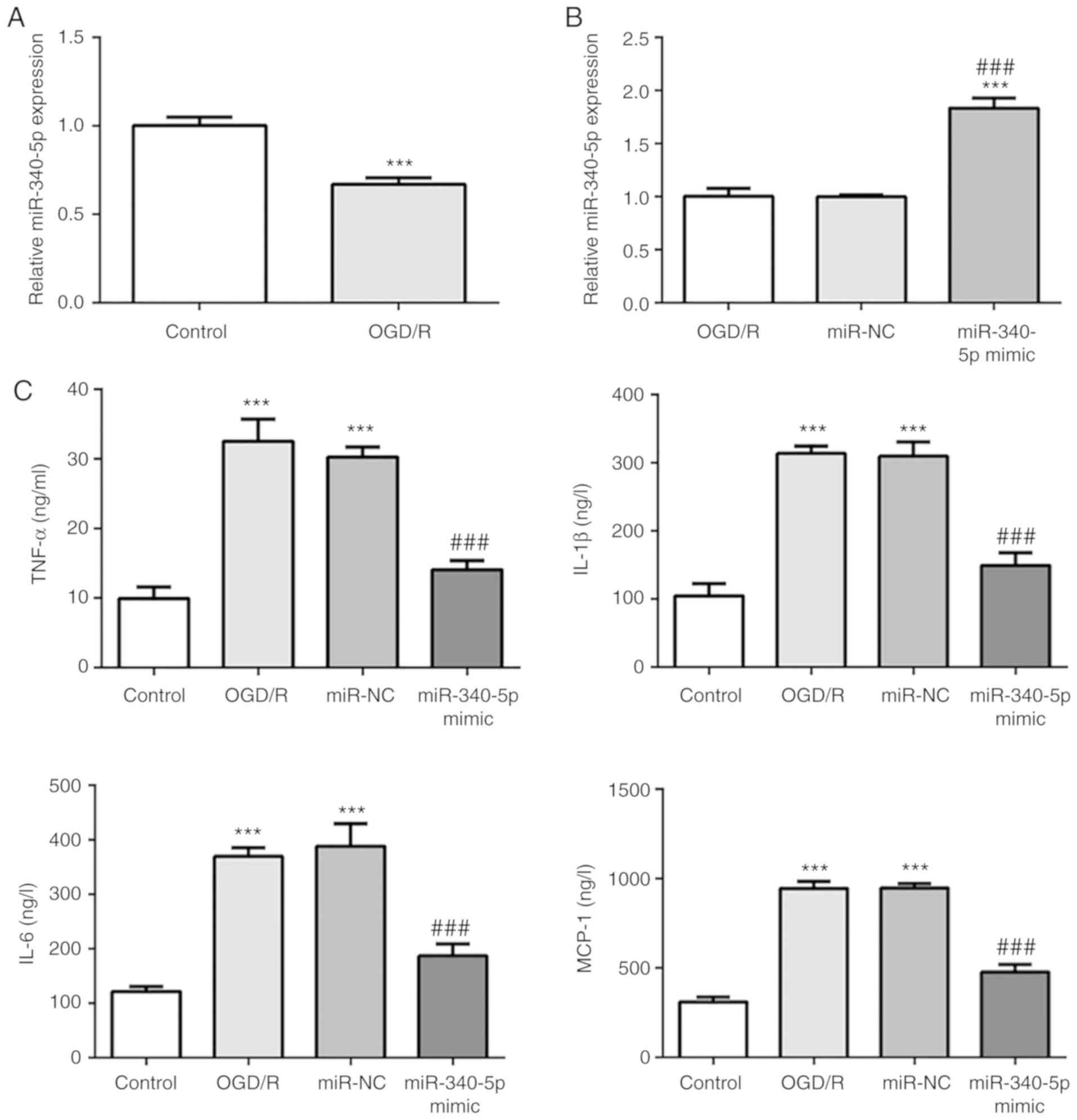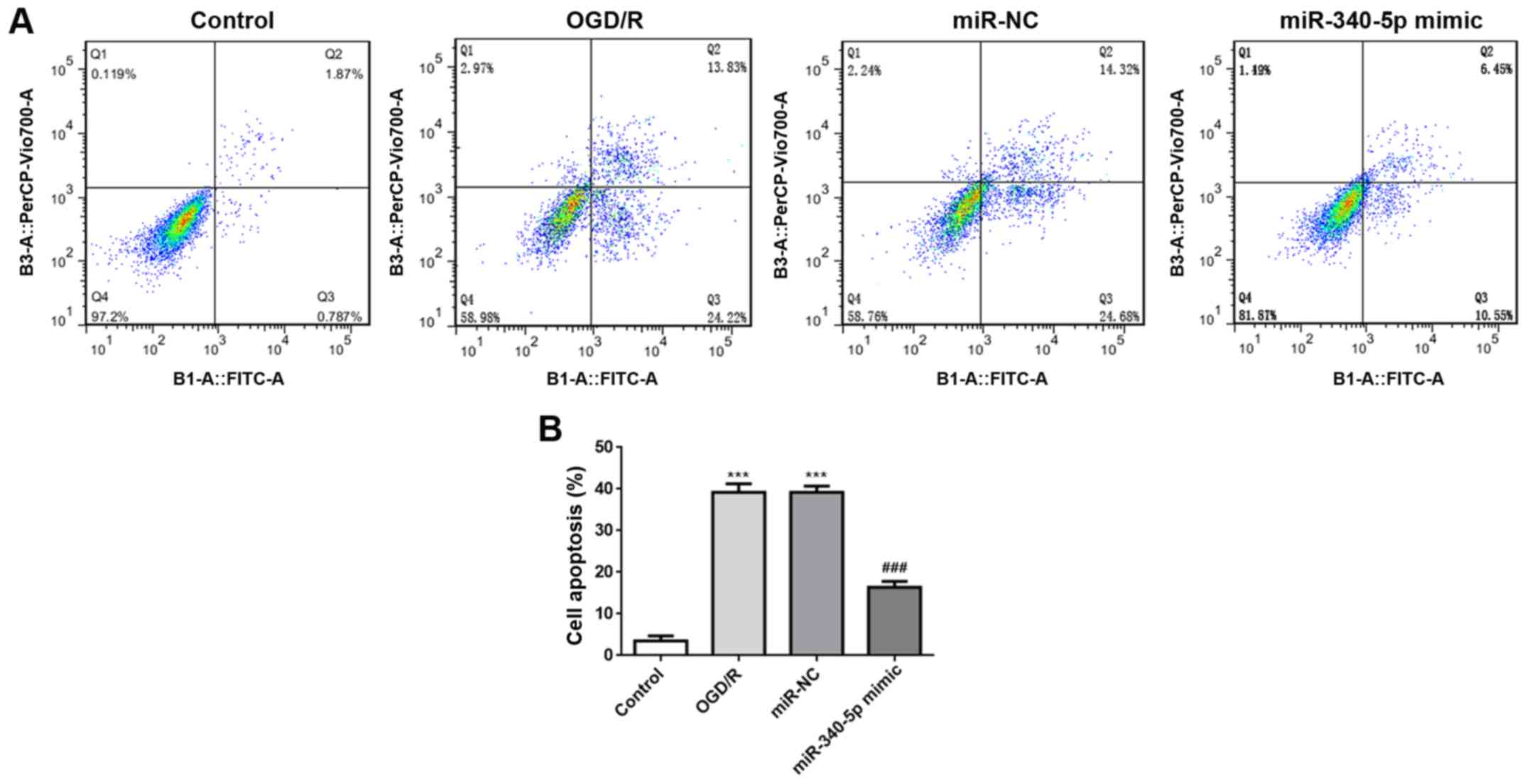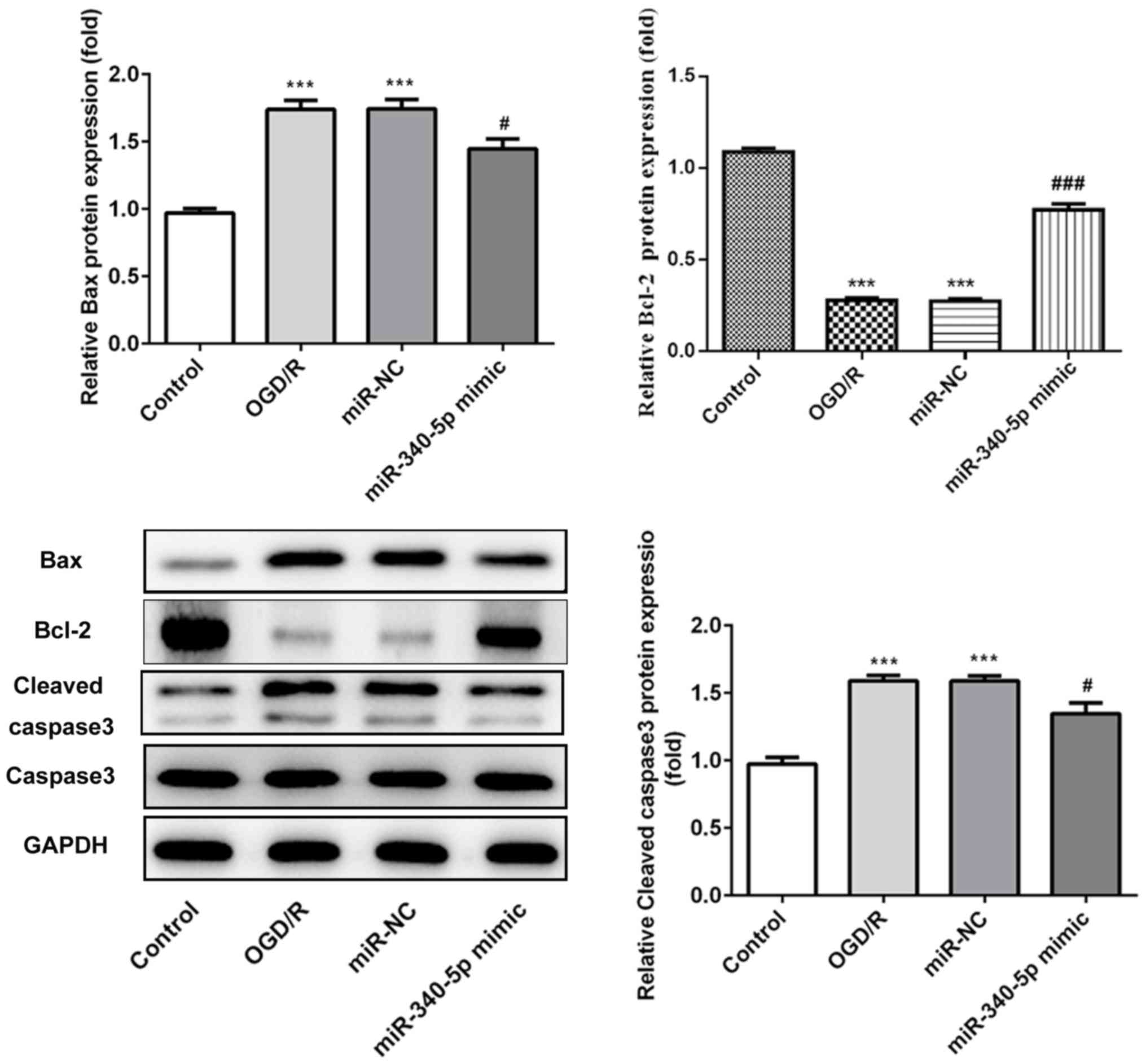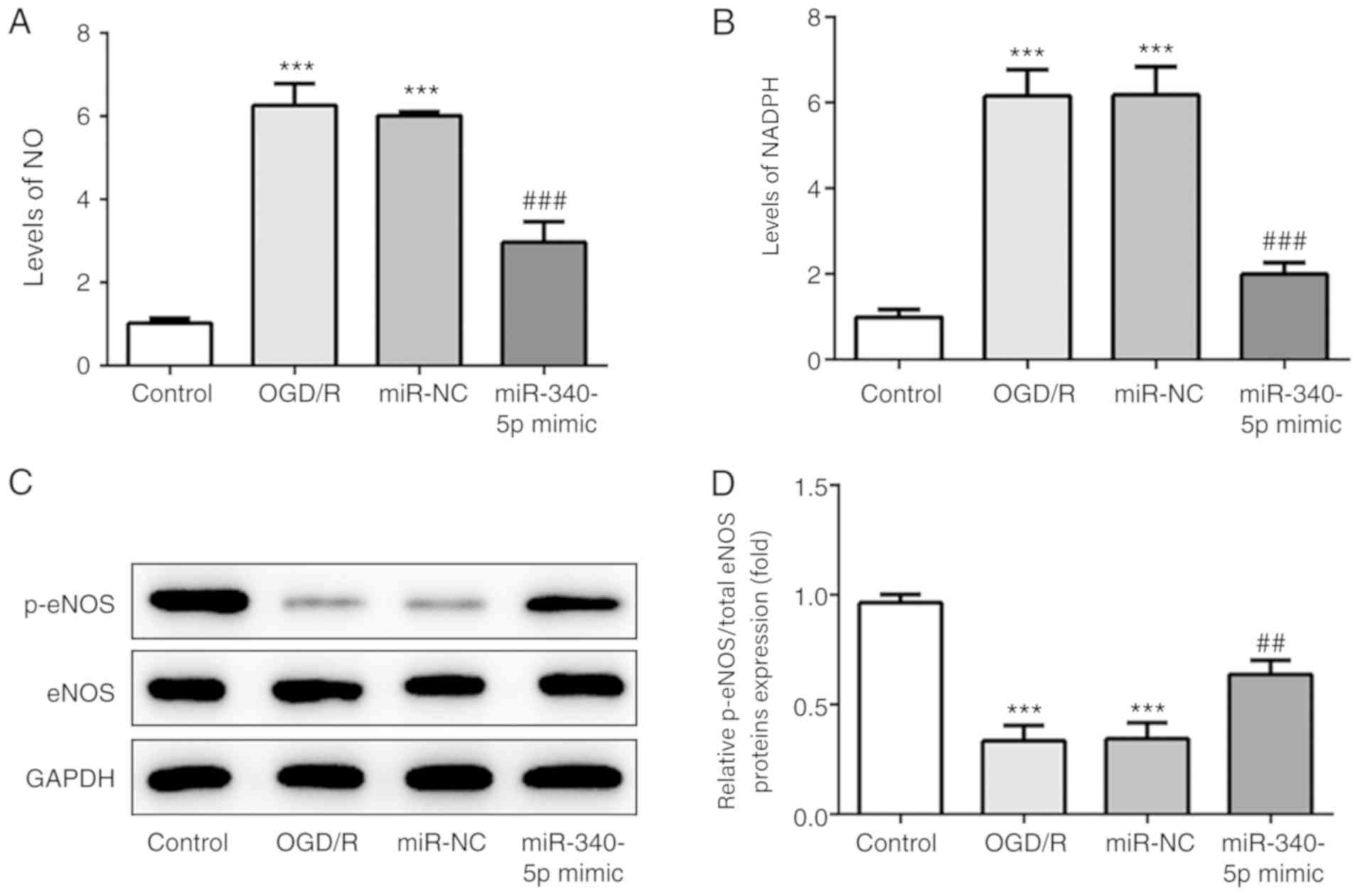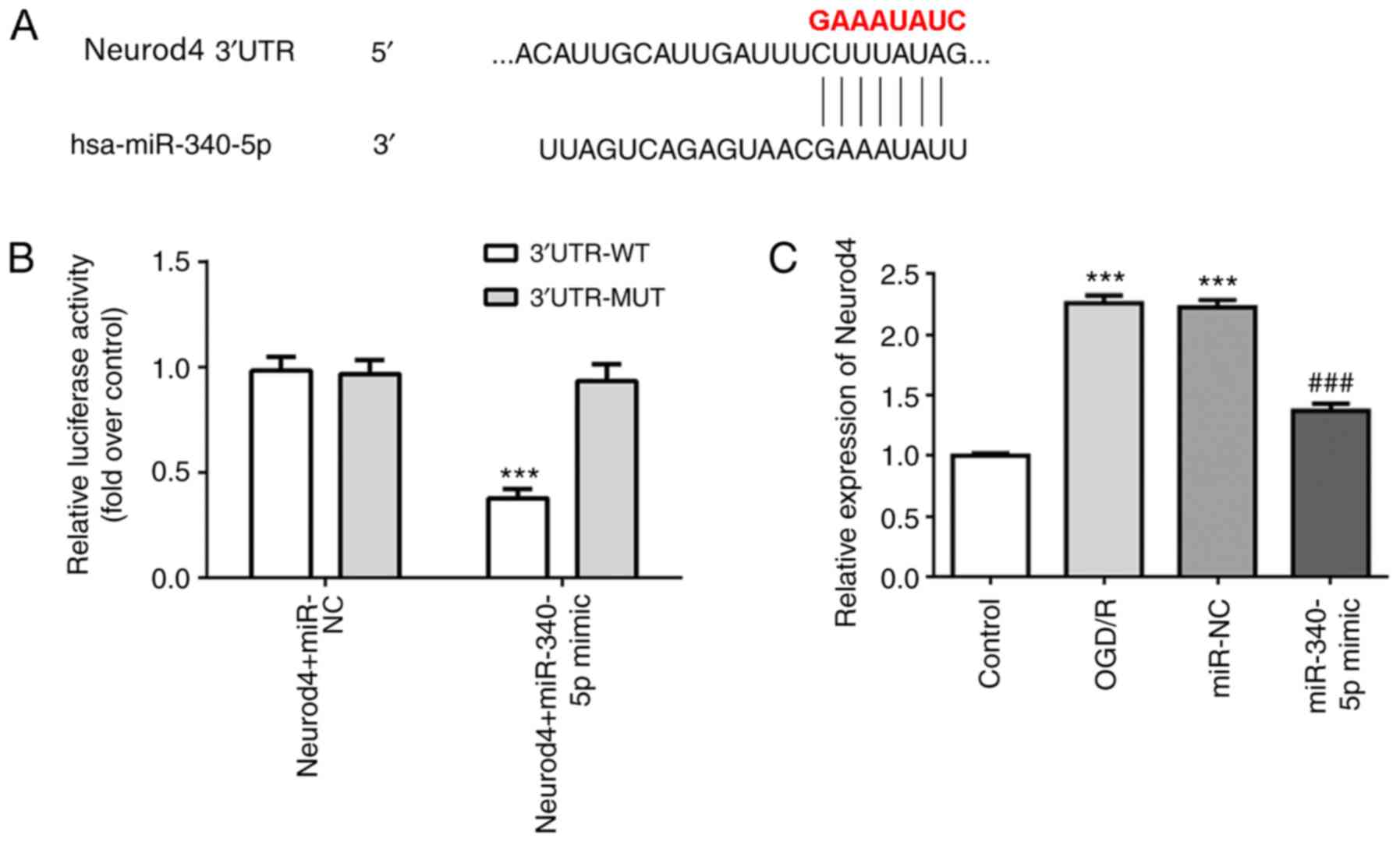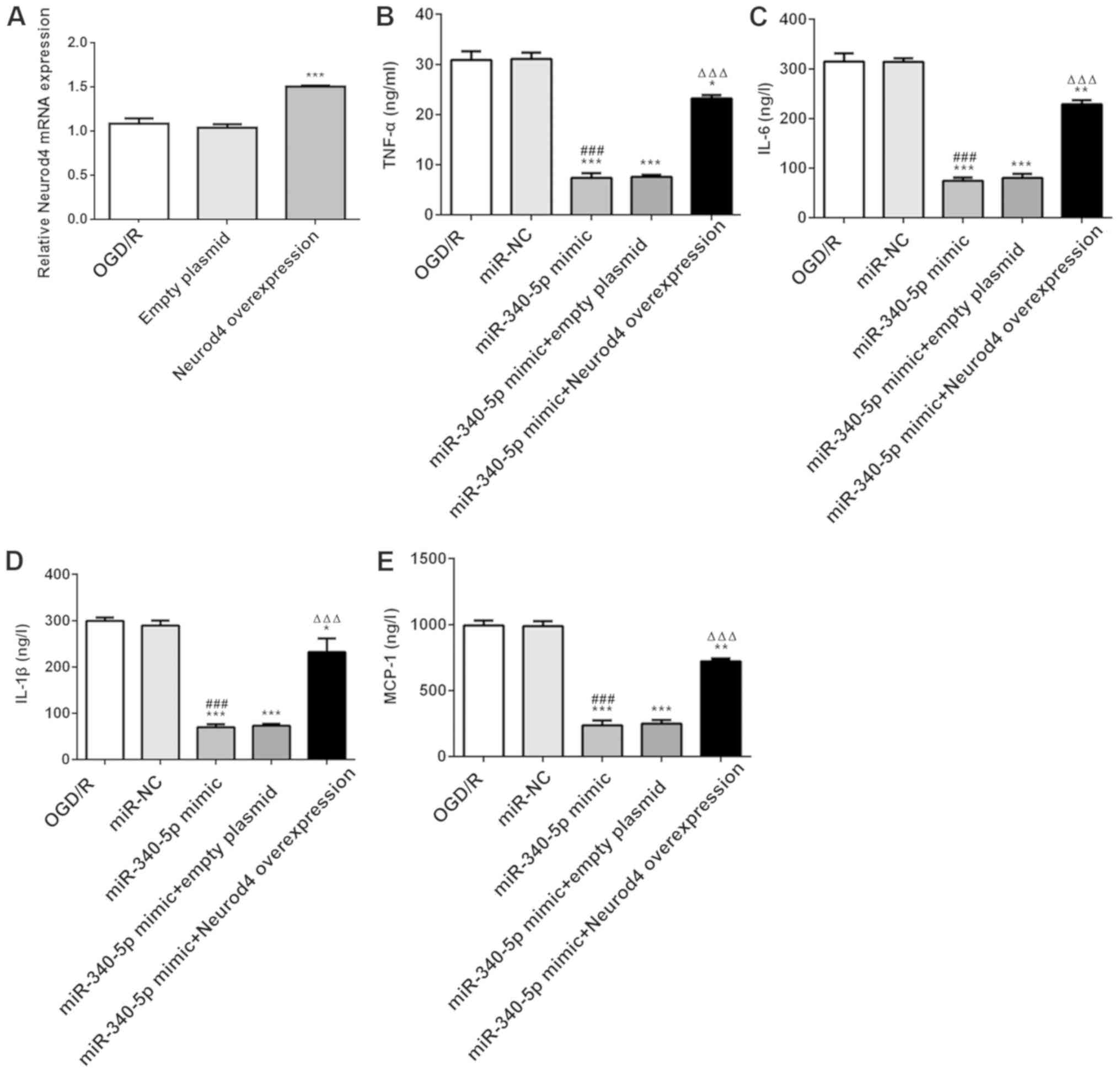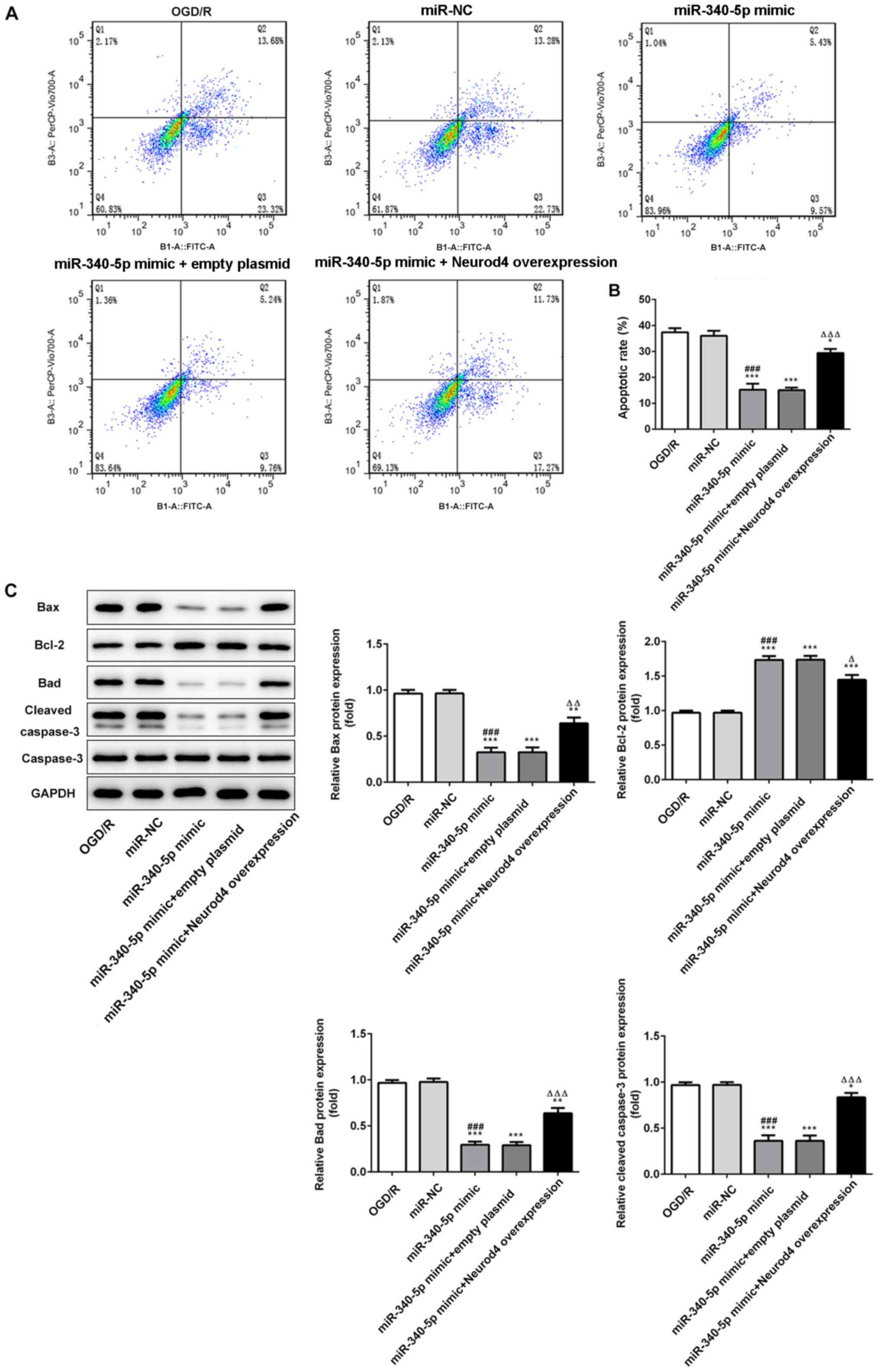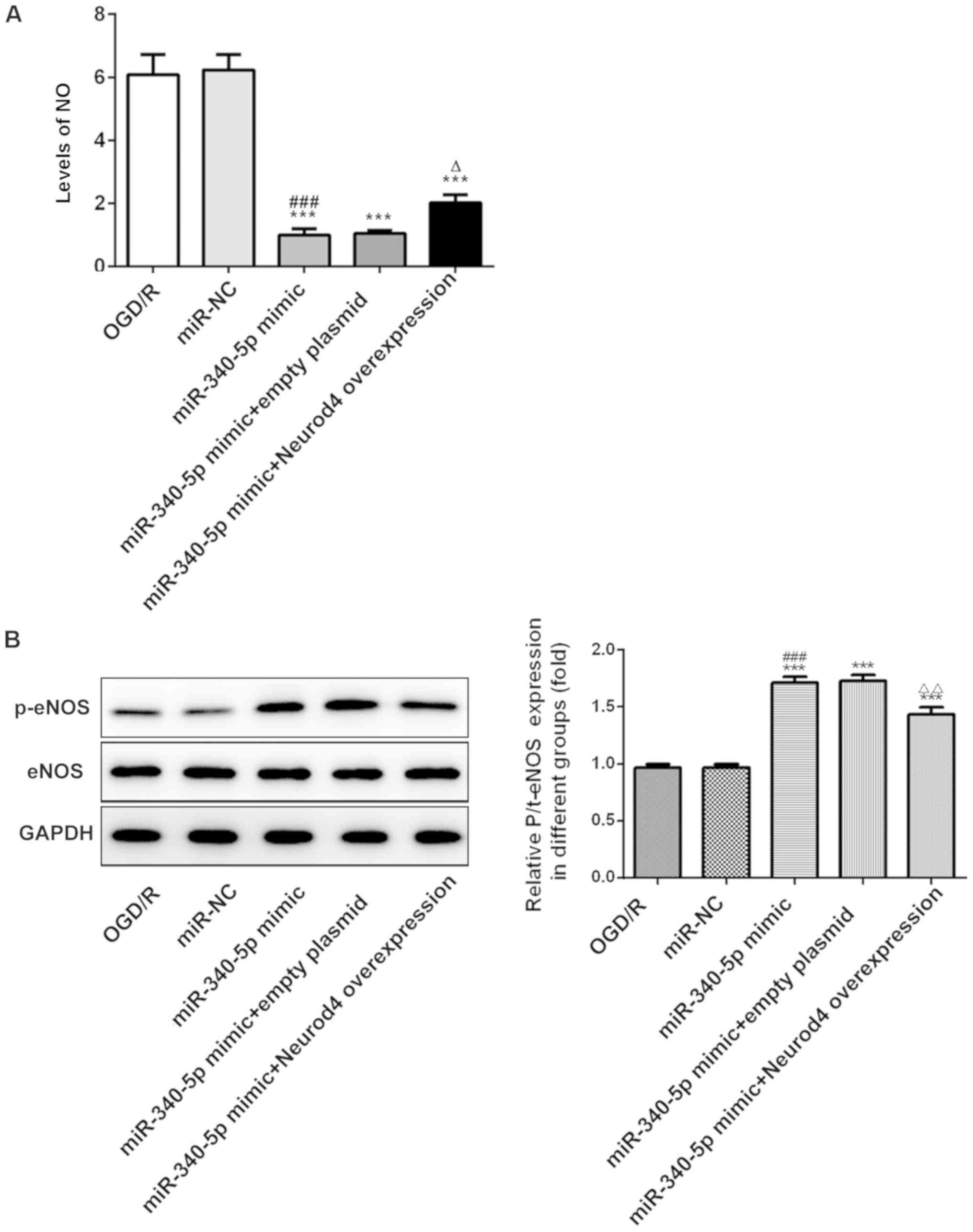|
1
|
Satue E, Vila-Corcoles A, Ochoa-Gondar O,
de Diego C, Forcadell MJ, Rodriguez-Blanco T, Barnes L and Jariod
M: Incidence and risk conditions of ischemic stroke in older
adults. Acta Neurol Scand. 134:250–257. 2016. View Article : Google Scholar : PubMed/NCBI
|
|
2
|
Lozano R, Naghavi M, Foreman K, Lim S,
Shibuya K, Aboyans V, Abraham J, Adair T, Aggarwal R, Ahn SY, et
al: Global and regional mortality from 235 causes of death for 20
age groups in 1990 and 2010: A systematic analysis for the global
burden of disease study 2010. Lancet. 380:2095–2128. 2012.
View Article : Google Scholar : PubMed/NCBI
|
|
3
|
Zhang Q, Wang Y, Song H, Hou C, Cao Q,
Dong K, Huang X, Feng W, Ovbiagele B, Wang M and Ji X: Clopidogrel
and ischemic stroke outcomes by smoking status: Smoker's paradox? J
Neurol Sci. 373:41–44. 2017. View Article : Google Scholar : PubMed/NCBI
|
|
4
|
Alloubani A, Saleh A and Abdelhafiz I:
Hypertension and diabetes mellitus as a predictive risk factors for
stroke. Diabetes Metab Syndr. 12:577–584. 2018. View Article : Google Scholar : PubMed/NCBI
|
|
5
|
Gao Y, Li R, Sun H, Li J, He B, Xiao S, Li
L and Wang J: Protective effects of oroxylin a on oxygen-glucose
deprivation/reperfusion-induced PC12 cells by activating the sonic
hedgehog signal pathway. Nat Product Commun.
14:1934578X198815442019.
|
|
6
|
Huang J, Upadhyay UM and Tamargo RJ:
Inflammation in stroke and focal cerebral ischemia. Surg Neurol.
66:232–245. 2006. View Article : Google Scholar : PubMed/NCBI
|
|
7
|
Peyravian N, Dikici E, Deo S, Toborek M
and Daunert S: Opioid antagonists as potential therapeutics for
ischemic stroke. Prog Neurobiol. 182:1016792019. View Article : Google Scholar : PubMed/NCBI
|
|
8
|
Yue XY, Feng ZQ, Yu XY, Hu JM, He XJ and
Shu S: Fire-needle acupuncture for upper limb spastic paralysis
after stroke: Study protocol for a randomized controlled trial. J
Integr Med. 17:167–172. 2019. View Article : Google Scholar : PubMed/NCBI
|
|
9
|
Barthels D and Das H: Current advances in
ischemic stroke research and therapies. Biochim Biophys Acta Mol
Basis Dis. 1866:1652602020. View Article : Google Scholar : PubMed/NCBI
|
|
10
|
Farzaneh M, Alishahi M, Derakhshan Z,
Sarani NH, Attari F and Khoshnam SE: The expression and functional
roles of miRNAs in embryonic and lineage-specific stem cells. Curr
Stem Cell Res Ther. 14:278–289. 2019. View Article : Google Scholar : PubMed/NCBI
|
|
11
|
Yin KJ, Deng Z, Hamblin M, Xiang Y, Huang
H, Zhang J, Jiang X, Wang Y and Chen YE: Peroxisome
proliferator-activated receptor delta regulation of miR-15a in
ischemia-induced cerebral vascular endothelial injury. J Neurosci.
30:6398–6408. 2010. View Article : Google Scholar : PubMed/NCBI
|
|
12
|
Liu P, Zhao H, Wang R, Wang P, Tao Z, Gao
L, Yan F, Liu X, Yu S, Ji X and Luo Y: MicroRNA-424 protects
against focal cerebral ischemia and reperfusion injury in mice by
suppressing oxidative stress. Stroke. 46:513–519. 2015. View Article : Google Scholar : PubMed/NCBI
|
|
13
|
Xu LJ, Ouyang YB, Xiong X, Stary CM and
Giffard RG: Post-stroke treatment with miR-181 antagomir reduces
injury and improves long-term behavioral recovery in mice after
focal cerebral ischemia. Exp Neurol. 264:1–7. 2015. View Article : Google Scholar : PubMed/NCBI
|
|
14
|
Harraz MM, Eacker SM, Wang X, Dawson TM
and Dawson VL: MicroRNA-223 is neuroprotective by targeting
glutamate receptors. Proc Natl Acad Sci USA. 109:18962–18967. 2012.
View Article : Google Scholar : PubMed/NCBI
|
|
15
|
Gao L, Pu X, Huang Y and Huang J:
MicroRNA-340-5p relieved chronic constriction injury-induced
neuropathic pain by targeting Rap1A in rat model. Genes Genomics.
41:713–721. 2019. View Article : Google Scholar : PubMed/NCBI
|
|
16
|
Li D, Zhou J, Yang B and Yu Y:
microRNA-340-5p inhibits hypoxia/reoxygenation-induced apoptosis
and oxidative stress in cardiomyocytes by regulating the Act1/NF-kB
pathway. J Cell Biochem. 120:14618–14627. 2019. View Article : Google Scholar : PubMed/NCBI
|
|
17
|
Long M, Wang Z, Zheng D, Chen J, Tao W,
Wang L, Yin N and Chen Z: Electroacupuncture pretreatment elicits
neuroprotection against cerebral ischemia-reperfusion injury in
rats associated with transient receptor potential vanilloid
1-mediated anti-oxidant stress and anti-inflammation. Inflammation.
42:1777–1787. 2019. View Article : Google Scholar : PubMed/NCBI
|
|
18
|
Dai Y, Zhang H, Zhang J and Yan M:
Isoquercetin attenuates oxidative stress and neuronal apoptosis
after ischemia/reperfusion injury via Nrf2-mediated inhibition of
the NOX4/ROS/NF-kB pathway. Chem Biol Interact. 284:32–40. 2018.
View Article : Google Scholar : PubMed/NCBI
|
|
19
|
Jiang Y, Li L, Tan X, Liu B, Zhang Y and
Li C: miR-210 mediates vagus nerve stimulation-induced antioxidant
stress and anti-apoptosis reactions following cerebral
ischemia/reperfusion injury in rats. J Neurochem. 134:173–181.
2015. View Article : Google Scholar : PubMed/NCBI
|
|
20
|
Palencia G, Medrano JAN, Ortiz-Plata A,
Farfán DJ, Sotelo J, Sánchez A and Trejo-Solís C: Anti-apoptotic,
anti-oxidant, and anti-inflammatory effects of thalidomide on
cerebral ischemia/reperfusion injury in rats. J Neurol Sci.
351:78–87. 2015. View Article : Google Scholar : PubMed/NCBI
|
|
21
|
Saad MA, Abdelsalam RM, Kenawy SA and
Attia AS: Ischemic preconditioning and postconditioning alleviates
hippocampal tissue damage through abrogation of apoptosis modulated
by oxidative stress and inflammation during transient global
cerebral ischemia-reperfusion in rats. Chem Biol Interact.
232:21–29. 2015. View Article : Google Scholar : PubMed/NCBI
|
|
22
|
Yoo H, Kim J, Lee AR, Lee JM, Kim OJ, Kim
JK and Oh SH: Alteration of microRNA 340-5p and arginase-1
expression in peripheral blood cells during acute ischemic stroke.
Mol Neurobiol. 56:3211–3221. 2019. View Article : Google Scholar : PubMed/NCBI
|
|
23
|
Zhu H, Wang X and Chen S: Downregulation
of MiR-218-5p protects against oxygen-glucose
deprivation/reperfusion-induced injuries of PC12 cells via
upregulating n-myc downstream regulated gene 4 (NDRG4). Med Sci
Monit. 26:e9201012020. View Article : Google Scholar : PubMed/NCBI
|
|
24
|
Shu K and Zhang Y: Protodioscin protects
PC12 cells against oxygen and glucose deprivation-induced injury
through miR-124/AKT/Nrf2 pathway. Cell Stress Chaperones.
24:1091–1099. 2019. View Article : Google Scholar : PubMed/NCBI
|
|
25
|
Wang JK, Wang LC, Jiang Y, Tu PF and Zeng
KW: Neuroprotective effects and mechanism of ethanol extract of
cistanche tubulosa against oxygen-glucose deprivation/reperfusion.
Zhongguo Zhong Yao Za Zhi. 44:2686–2690. 2019.(In Chinese).
PubMed/NCBI
|
|
26
|
Livak KJ and Schmittgen TD: Analysis of
relative gene expression data using real-time quantitative PCR and
the 2(-Delta Delta C(T)) method. Methods. 25:402–408. 2001.
View Article : Google Scholar : PubMed/NCBI
|
|
27
|
Kovac S, Angelova PR, Holmstrom KM, Zhang
Y, Dinkova-Kostova AT and Abramov AY: Nrf2 regulates ROS production
by mitochondria and NADPH oxidase. Biochim Biophys Acta.
1850:794–801. 2015. View Article : Google Scholar : PubMed/NCBI
|
|
28
|
Li H, Ma J, Fang Q, Li H, Shen H, Li X,
Xue Q, Zhu J and Chen G: Botch protects neurons from ischemic
insult by antagonizing Notch-mediated neuroinflammation. Exp
Neurol. 321:1130282019. View Article : Google Scholar : PubMed/NCBI
|
|
29
|
Urdaneta AE and Bhalla P: Cutting edge
acute ischemic stroke management. Emerg Med Clin North Am.
37:365–379. 2019. View Article : Google Scholar : PubMed/NCBI
|
|
30
|
Geng J, Zhang Y, Li S, Wang J, Wang H, Aa
J and Wang G: Metabolomic profiling reveals that reprogramming of
cerebral glucose metabolism is involved in ischemic
preconditioning-induced neuroprotection in a rodent model of
ischemic stroke. J Proteome Res. 18:57–68. 2019.PubMed/NCBI
|
|
31
|
Cisse FA, Damien C, Bah AK, Touré ML,
Barry M, Djibo Hamani AB, Haba M, Soumah FM and Naeije G: Minimal
setting stroke unit in a sub-saharan African public hospital. Front
Neurol. 10:8562019. View Article : Google Scholar : PubMed/NCBI
|
|
32
|
Moussaddy A, Demchuk AM and Hill MD:
Thrombolytic therapies for ischemic stroke: Triumphs and future
challenges. Neuropharmacology. 134:272–279. 2018. View Article : Google Scholar : PubMed/NCBI
|
|
33
|
Piccardi B, Arba F, Nesi M, Palumbo V,
Nencini P, Giusti B, Sereni A, Gadda D, Moretti M, Fainardi E, et
al: Reperfusion injury after ischemic stroke study (RISKS):
Single-centre (Florence, Italy), prospective observational protocol
study. BMJ Open. 8:e0211832018.PubMed/NCBI
|
|
34
|
Li Y, Shi J, Sun X, Li Y, Duan Y and Yao
H: Theaflavic acid from black tea protects PC12 cells against
ROS-mediated mitochondrial apoptosis induced by OGD/R via
activating Nrf2/ARE signaling pathway. J Nat Med. 74:238–246. 2020.
View Article : Google Scholar : PubMed/NCBI
|
|
35
|
Liu Y, Wu X, An J, Lv W, Geng Y, Lou T and
Zhang Y: Glaucocalyxin B protects against
oxygen-glucose-deprivation/reperfusion-induced neuronal injury in
PC-12 cells. J Cell Biochem. 120:6137–6144. 2019. View Article : Google Scholar : PubMed/NCBI
|
|
36
|
Yu Y, Zhang X, Han Z, Zhao W and Zhang L:
Expression and regulation of miR-449a and AREG in cerebral ischemic
injury. Metab Brain Dis. 34:821–832. 2019. View Article : Google Scholar : PubMed/NCBI
|
|
37
|
Wang H, Wei W, Lan X, Liu N, Li Y, Ma H,
Sun T, Peng X, Zhuang C and Yu J: Neuroprotective effect of
swertiamain on cerebral ischemia/reperfusion injury by inducing the
Nrf2 protective pathway. ACS Chem Neurosci. 10:2276–2286. 2019.
View Article : Google Scholar : PubMed/NCBI
|
|
38
|
Huang XP, Ding H, Lu JD, Tang YH, Deng BX
and Deng CQ: Autophagy in cerebral ischemia and the effects of
traditional Chinese medicine. J Integr Med. 13:289–296. 2015.
View Article : Google Scholar : PubMed/NCBI
|
|
39
|
Nan L, Xie Q, Chen Z, Zhang Y, Chen Y, Li
H, Lai W, Chen Y and Huang M: Involvement of PARP-1/AIF signaling
pathway in protective effects of gualou guizhi decoction against
ischemia-reperfusion injury-induced apoptosis. Neurochem Res.
45:278–294. 2020. View Article : Google Scholar : PubMed/NCBI
|
|
40
|
Wicha P, Tocharus J, Janyou A, Jittiwat J,
Changtam C, Suksamrarn A and Tocharus C: Hexahydrocurcumin protects
against cerebral ischemia/reperfusion injury, attenuates
inflammation, and improves antioxidant defenses in a rat stroke
model. PLoS One. 12:e01892112017. View Article : Google Scholar : PubMed/NCBI
|
|
41
|
Yang L, Ge D, Chen X, Jiang C and Zheng S:
miRNA-544a regulates the inflammation of spinal cord injury by
inhibiting the expression of NEUROD4. Cell Physiol Biochem.
51:1921–1931. 2018. View Article : Google Scholar : PubMed/NCBI
|
|
42
|
Golan MH, Mane R, Molczadzki G, Zuckerman
M, Kaplan-Louson V, Huleihel M and Perez-Polo JR: Impaired
migration signaling in the hippocampus following prenatal hypoxia.
Neuropharmacology. 57:511–522. 2009. View Article : Google Scholar : PubMed/NCBI
|
|
43
|
Dai J, Xu LJ, Han GD, Sun HL, Zhu GT,
Jiang HT, Yu GY and Tang XM: MiR-137 attenuates spinal cord injury
by modulating NEUROD4 through reducing inflammation and oxidative
stress. Eur Rev Med Pharmacol Sci. 22:1884–1890. 2018.PubMed/NCBI
|
|
44
|
Gao XJ, Xie GN, Liu L, Fu ZJ, Zhang ZW and
Teng LZ: Sesamol attenuates oxidative stress, apoptosis and
inflammation in focal cerebral ischemia/reperfusion injury. Exp
Ther Med. 14:841–847. 2017. View Article : Google Scholar : PubMed/NCBI
|
|
45
|
Zhang DD, Zou MJ, Zhang YT, Fu WL, Xu T,
Wang JX, Xia WR, Huang ZG, Gan XD, Zhu XM and Xu DG: A novel
IL-1RA-PEP fusion protein with enhanced brain penetration
ameliorates cerebral ischemia-reperfusion injury by inhibition of
oxidative stress and neuroinflammation. Exp Neurol. 297:1–13. 2017.
View Article : Google Scholar : PubMed/NCBI
|
|
46
|
Jiang M, Li J, Peng Q, Liu Y, Liu W, Luo
C, Peng J, Li J, Yung KK and Mo Z: Neuroprotective effects of
bilobalide on cerebral ischemia and reperfusion injury are
associated with inhibition of pro-inflammatory mediator production
and down-regulation of JNK1/2 and p38 MAPK activation. J
Neuroinflammation. 11:1672014. View Article : Google Scholar : PubMed/NCBI
|
|
47
|
He D, Song X and Li L:
Geranylgeranylacetone protects against cerebral ischemia and
reperfusion injury: HSP90 and eNOS phosphorylation involved. Brain
Res. 1599:150–157. 2015. View Article : Google Scholar : PubMed/NCBI
|















